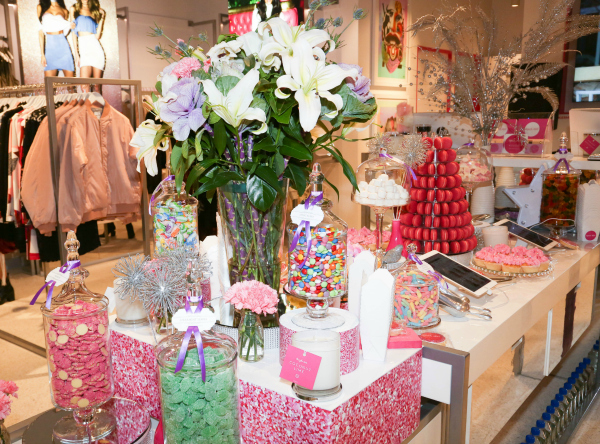Not known Incorrect Statements About I Luv Candi
Table of ContentsThe smart Trick of I Luv Candi That Nobody is Talking AboutNot known Details About I Luv Candi An Unbiased View of I Luv CandiAn Unbiased View of I Luv CandiSome Known Facts About I Luv Candi.
You can also approximate your own earnings by applying various presumptions with our monetary strategy for a sweet-shop. Typical regular monthly profits: $2,000 This sort of candy store is frequently a little, family-run service, probably understood to locals but not bring in lots of travelers or passersby. The shop may use a selection of typical sweets and a few homemade treats.
The store doesn't typically bring unusual or expensive items, focusing rather on budget friendly treats in order to maintain routine sales. Thinking a typical costs of $5 per customer and around 400 clients monthly, the monthly income for this sweet-shop would certainly be roughly. Typical month-to-month revenue: $20,000 This candy shop advantages from its tactical location in an active metropolitan area, attracting a multitude of customers searching for sweet extravagances as they go shopping.

In enhancement to its diverse candy selection, this shop could additionally market associated items like gift baskets, candy bouquets, and novelty products, supplying several revenue streams. The store's place needs a higher spending plan for rental fee and staffing yet results in higher sales volume. With an estimated ordinary investing of $10 per customer and about 2,000 customers each month, this shop might generate.
The Greatest Guide To I Luv Candi
Located in a major city and traveler destination, it's a big establishment, typically topped numerous floorings and potentially component of a nationwide or worldwide chain. The store provides a tremendous variety of candies, consisting of special and limited-edition products, and merchandise like well-known apparel and accessories. It's not just a store; it's a destination.
The functional costs for this type of store are significant due to the location, dimension, staff, and features offered. Presuming a typical acquisition of $20 per customer and around 2,500 consumers per month, this flagship store can accomplish.
Classification Examples of Costs Ordinary Monthly Price (Variety in $) Tips to Decrease Expenditures Rent and Utilities Shop rental fee, power, water, gas $1,500 - $3,500 Consider a smaller area, negotiate rent, and use energy-efficient illumination and devices. Stock Sweet, treats, packaging materials $2,000 - $5,000 Optimize supply management to decrease waste and track preferred items look here to prevent overstocking.
The Greatest Guide To I Luv Candi
Advertising And Marketing and Advertising and marketing Printed matter, online advertisements, promos $500 - $1,500 Focus on economical digital marketing and make use of social media systems free of cost promo. Insurance Organization obligation insurance $100 - $300 Search for competitive insurance coverage prices and consider packing policies. Tools and Maintenance Sales register, display shelves, repair work $200 - $600 Buy used tools when feasible and carry out routine upkeep to prolong devices lifespan.

This suggests that the sweet-shop has actually reached a point where it covers all its dealt with expenditures and begins generating revenue, we call it the breakeven point. Consider an example of a candy store where the regular monthly set expenses generally amount to about $10,000. A harsh price quote for the breakeven factor of a sweet-shop, would after that be about (because it's the complete set price to cover), or marketing in between with a cost array of $2 to $3.33 per unit.
The Ultimate Guide To I Luv Candi
A huge, well-located sweet store would obviously have a greater breakeven factor than a tiny shop that doesn't require much profits to cover their expenses. Interested about the productivity of your candy store?
Another risk is competition from other sweet-shop or bigger sellers that could offer a wider variety of products at reduced rates (https://www.wattpad.com/user/iluvcandiau). Seasonal fluctuations sought after, like a decrease in sales after holidays, can likewise affect profitability. In addition, altering consumer choices for much healthier treats or nutritional constraints can lower the allure of traditional sweets
Last but not least, economic declines that reduce customer costs can influence candy store sales and profitability, making it crucial for sweet stores to handle their expenses and adjust to altering market conditions to stay successful. These hazards are frequently included in the SWOT analysis for a candy store. Gross margins and internet margins are essential indications used to gauge the productivity of a candy shop organization.
6 Easy Facts About I Luv Candi Explained
Basically, it's the earnings remaining after subtracting expenses directly relevant to the sweet stock, such as purchase costs from distributors, production prices (if the sweets are homemade), and staff wages for those associated with manufacturing or sales. https://0rz.tw/DEIqy. Internet margin, conversely, variables in all the costs the sweet store sustains, including indirect expenses like management expenses, advertising and marketing, rental fee, and taxes
Sweet shops usually have an average gross margin.For circumstances, if your sweet store makes $15,000 per month, your gross profit would be approximately 60% x $15,000 = $9,000. Consider a candy store that marketed 1,000 candy bars, with each bar priced at $2, making the complete revenue $2,000.